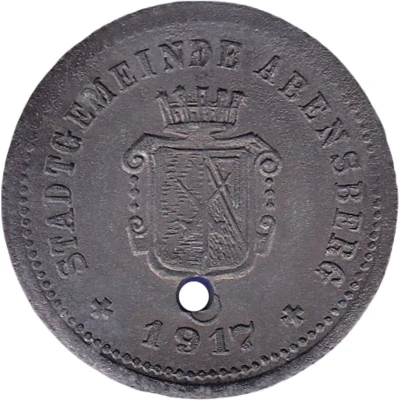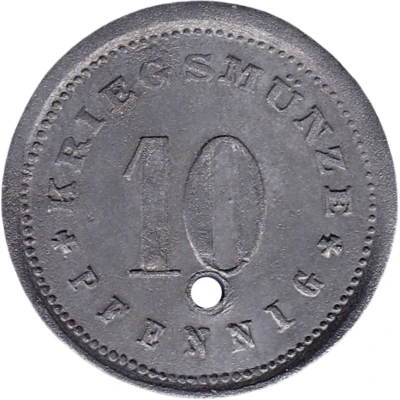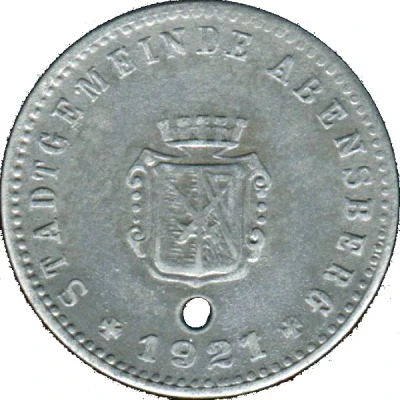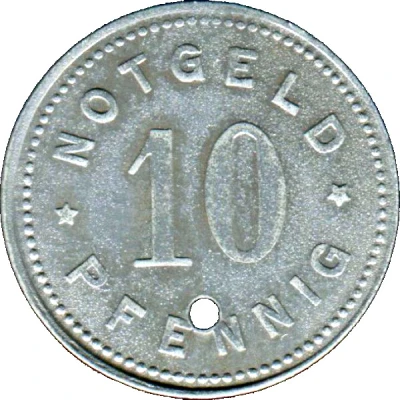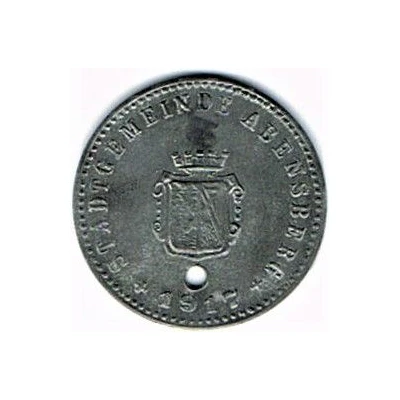
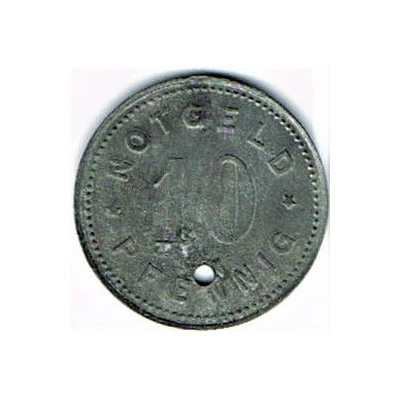

© Kreutzer67 (CC BY-NC-SA)
10 Pfennigs - Abensberg
1917 year| Zinc | - | 21.5 mm |
| Issuer | City of Abensberg (Federal state of Bavaria) |
|---|---|
| Emperor | William II (Wilhelm II) (1888-1918) |
| Type | Standard circulation coin |
| Year | 1917 |
| Value | 10 Pfennigs (10 Pfennige) (0.10) |
| Currency | Mark (1914-1924) |
| Composition | Zinc |
| Diameter | 21.5 mm |
| Shape | Round with a round hole |
| Technique | Milled |
| Orientation | Medal alignment ↑↑ |
| Demonetized | Yes |
| Updated | 2024-10-04 |
| Numista | N#301226 |
|---|---|
| Rarity index | 94% |
Reverse
Script: Latin
Lettering:
NOTGELD
10
PFENNIG
Edge
Plain
Interesting fact
The 10 Pfennigs - Abensberg 1917 coin was minted during a time of economic turmoil in Germany, known as the "Inflationary Period" (1914-1923). During this time, the value of the German mark (the national currency) plummeted, and prices for everyday goods skyrocketed. As a result, many Germans turned to alternative forms of currency, such as local emergency currencies like the 10 Pfennigs - Abensberg 1917 coin. These coins were issued by local municipalities and were backed by the city's credit, rather than the national government. Despite their humble denomination, these coins played an important role in helping people purchase essential goods and services during a time of economic uncertainty.
